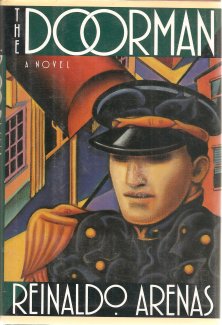The Doorman, by Reinaldo Arenas – Book review by Fred Patten.
by Patch O'Furr
Submitted by Fred Patten, Furry’s favorite historian and reviewer. Originally written for Quentin Long’s Anthro Magazine.
 The Doorman, by Reinaldo Arenas. Translated from the Spanish by Dolores M. Koch.
The Doorman, by Reinaldo Arenas. Translated from the Spanish by Dolores M. Koch.
NYC, Grove Weidenfeld, June 1991, hardcover 0-8021-1109-2 $17.95 (191 pages).
Reinaldo Arenas was a young Cuban novelist known for both novels of “magical realism” and a flamboyant homosexual life style. The Castro regime, notoriously anti-homosexual, imprisoned and tortured him, and finally exiled him as part of the Mariel boatlift of 1980. He wrote several critically-acclaimed novels, plays, and collections of poetry in New York during the 1980s. In 1987 he contracted AIDS and, giving in to worsening health, committed suicide in 1990.
The Doorman (El Portero) was published in 1987 but not translated into English until after his death. It was described as a semi-autobiographical surrealist fantasy; reviewers threw the terms “magical realism”, “sardonic Swiftian parable”, and “fabulist” around a lot. Juan, an idealistic young Cuban exile, ends up in New York City (just like Arenas). He eventually gets a position as a doorman at an exclusive luxury Manhattan apartment building. Juan is an overzealous idealist who appoints himself to be a friend of each of the tenants, with a mission to help them open a mystical “door to true happiness” (pg. 6). Alas, the tenants are all self-centered elitists who ignore him. But each tenant has a pet, and the pets listen to his message.




